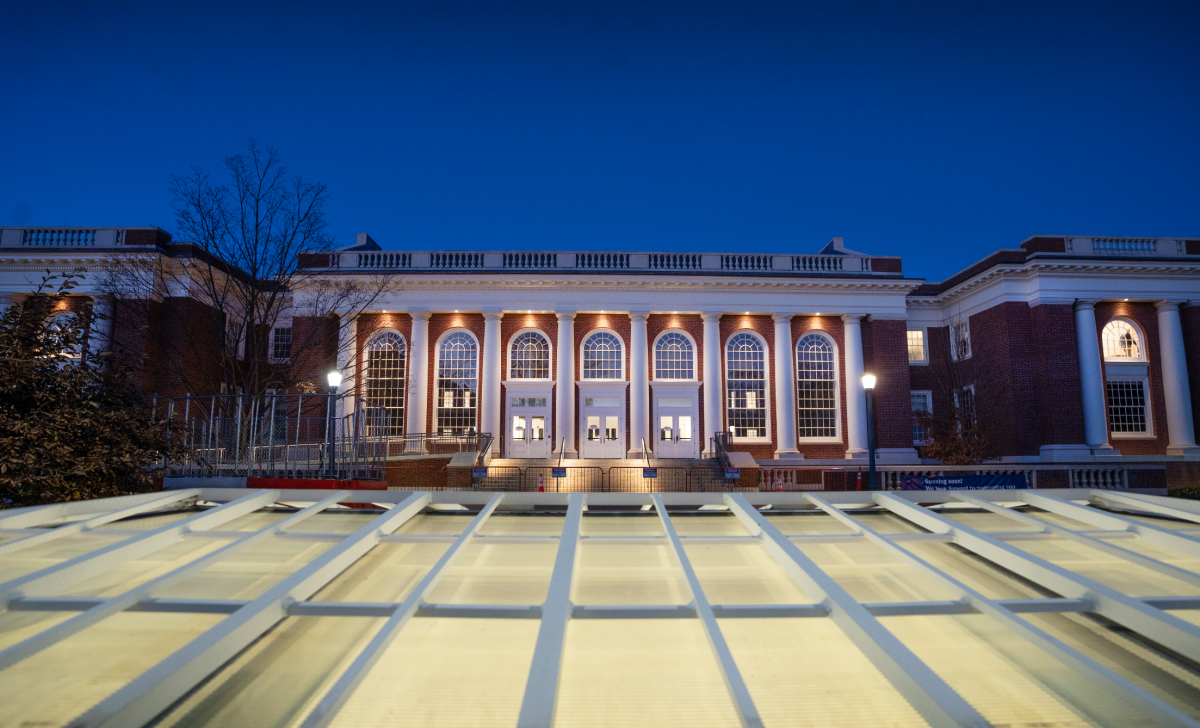By Merrill Hart
After a nearly four-year closure for renovations, Shannon Library has re-established itself as the University of Virginia’s main study spot. This December marks a full academic year since five floors of expanded seating and a grilled cheese café joined historic reading rooms and the checkered entrance hall students first crossed back in 1938.
UVA Library employees say community use of the space has held steady over the year, with about 635,000 visitors recorded since March. That’s more than twice the foot traffic that neighboring Clemons Library saw in the same time period.
Few, if any, current UVA undergraduates had the chance to explore the main library, formerly known as Alderman, before it closed its doors in 2020. Elyse Girard, executive director of communications and user experience for university libraries, describes Alderman as “kind of a sad space to go into”—with much fewer windows than it has now.
“I just love how much light is in the building and how open and inviting it is [now],” Girard says. “I was only at the library a couple months before it closed, and it was just dark and dingy and hard to navigate.”
Public Services Manager Will Wyatt, who started working at UVA libraries as an undergraduate in 2014, agreed the old library felt dark. Standing at 6-feet, 4-inches, he would often brush against low ceilings during visits to the library’s pre-renovation cramped stacks.
But certain nooks always felt like home. When Wyatt’s family came to Charlottesville for his 2017 graduation, he proudly walked them through Alderman’s walnut-paneled McGregor Room, known affectionately as the “Harry Potter Room.” Today, the space features the same vintage feel, updated with new windows and shelving.
“That’s an affectionate place in my heart,” says Wyatt. “That’s still a room that gets a lot of gasps from people.”
The mix of old and new echoes creative efforts to reframe resources for an increasingly digital era. After a lengthy moving process, the library now houses 1.2 million books—roughly 12 miles worth of shelf space. Online platforms like Virgo have seen increased usage, according to Girard, and staff continue monitoring the evolving use of space and services. Instead of visiting only to check out books, students often come to Shannon to study together, Wyatt observed.
“I do feel that in this iteration of the building, there are more spaces that are conducive to collaboration and teamwork, and I see them being used for that quite frequently,” Wyatt says.
Shannon also houses the Scholars’ Lab Makerspace, an interactive facility on the third floor that connects users with electronics, crafting, laser-cutting and 3D-printing. Makerspace manager Ammon Shepherd says the move from Clemons to Shannon has increased interest in user-led projects, which range from surgeons printing heart models to students designing elaborate Halloween costumes. The Makerspace plans to host 40 community events next semester.
With all the buzz, one question still lingers for some Shannon enthusiasts: Where is talking allowed? Unlike Clemons, where each floor requires a different decibel level, Shannon opened with no rules.
While the library has not enforced noise norms because staff are still figuring out how each space is being used, Wyatt says certain rooms already have unspoken conventions.
“The McGregor Room has always been, you know, you’re gonna get a death glare if you step too hard in there,” he says.




